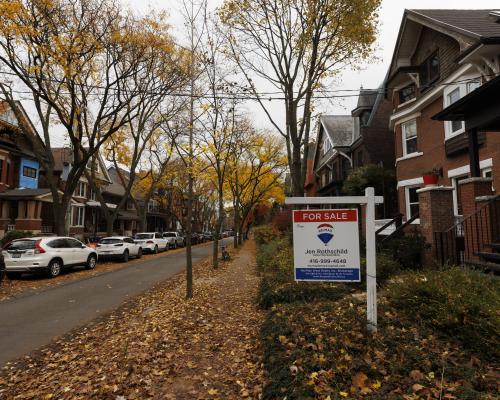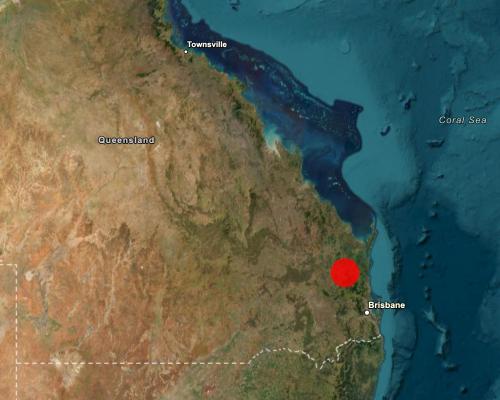
At the start of 2022, the typical house in Australia and Canada was worth about $840,000 in each country’s local currency.
Australian city prices have climbed by about A$85,000 over the subsequent three years, while Canadian prices have crashed by C$150,000, leaving the median Canadian home nearly 20% cheaper.
The Canadian correction has raised questions over whether properties in Australia, economically comparable to its Commonwealth comrade, could face a similar selldown.
Overheated demand
Borrowers in both countries enjoyed low interest rates in 2020 and 2021, driving up prices. Australia’s most expensive city, Sydney, saw median values surge A$250,000 from 2020 to early 2022, reaching nearly A$1.2m.
Overheated demand drove prices far higher in Toronto, Canada’s biggest city, up by A$400,000 to a peak of C$1.3m over the same period, according to the Canadian Real Estate Association (CREA).
Canada’s central bank responded by ratcheting up interest rates while the government banned foreign buyers and curbed immigration, sending prices into freefall. Toronto’s median price fell below C$1.1m and is yet to recover.
Toronto’s pandemic buying boom saw home sales surge in 2021 then halve by 2023 as high numbers of homes arrived on the market simultaneously, further dragging down prices.
Demand slumped further as locals fled Toronto for more affordable towns with the advent of remote work.
Sign up: AU Breaking News email
Tyson Erlick’s landlord clients at Property Management Toronto had been excited by surging home prices back in 2021. One investor paid C$1m for a sub-50 square metre flat in downtown Toronto’s Yorkville neighbourhood that’s now worth about C$700,000.
“We’re seeing a lot of landlords panic,” Erlick said. “You’re now looking at a mega loss.”
Sydney endured a brief slump but resumed its upward climb by early 2023, with rents and home prices rising as a growing population grappled with a shortage of homes.
Rents in Toronto, already constrained by local government rent caps, have fallen on average since 2023. Homebuyers are taking out smaller mortgages on houses and apartments, or condominiums, as they’re called in Canada.
Greater Toronto resident Dave, who lives 70km from the city centre, bought a condo for a $100,000 discount in July 2024 after the previous owners struggled to sell.
“There are so many condominiums that they can’t sell,” said Dave, who asked for his surname not to be shared. “We were lucky.”
Rate rises
The improved affordability in Canada has raised the prospect a similar slump could happen in Australia.
Both countries saw a rare nationwide price drop when interest rate hikes in 2022 limited borrowing power, though Australians faced slower and smaller rate increases.
Along with surging migration and strong job creation, smaller rate hikes kept Australian prices from falling more than 10%, according to Eliza Owen, head of research at property data firm Cotality.
“As long as Australians can keep paying their mortgage and they don’t have to sell, that will always restrict supply [and] limit the amount that property values can fall,” she said.
Australian home values have kept rising through 2025, up 3.7% in the year to July according to Cotality, and Commonwealth Bank analysts predict that pace will reach 6% by December.
An economic shock and blowout in the unemployment rate would be a direct but damaging way for that momentum to reverse, Owen said.
“That technically would make housing cheaper, but it doesn’t necessarily make housing more affordable if a crash is coming alongside severe economic downturn [and] people really can’t afford to buy,” she said.
Donald Trump’s tariff threats, for example, have prolonged Canada’s crash by pushing more Canadians out of work, leaving buyers without incomes and unable to pay off their mortgages.
Data released at the end of July showed Canada’s economic activity had fallen for two consecutive months as it grappled with US trade chaos. The same day, Trump lifted tariff rates on Canadian goods from 25% to 35%.
The number of unemployed Canadians reached 1.6 million and the national unemployment rate climbed to 7% in May, from 5% in early 2023.
The share of Canadians more than 90 days behind on mortgage repayments remains small but has doubled since 2022, much faster than in Australia.
Tariffs have had a muted impact on the Australian economy, where the jobs market remains robust, unemployment has only risen to 4.3% and mortgage arrears remain at modest levels.
While Sydney’s unemployment rate remains low, at 4.5%, Toronto’s is nearly than double that, approaching 9%, leaving fewer locals with the incomes to take advantage of a slight improvement on the city’s still-unaffordable homes, according to the renters advocate Bruno Dobrusin.
“The vast majority are still struggling with increasing rents, without the capacity to benefit from the slowdown of home prices,” said Dobrusin, organiser at the York South-Weston neighbourhood’s tenant union.
Housing in both countries is already too far out of reach for price corrections to help affordability, according to Carolyn Whitzman, a housing researcher and adjunct professor at the University of Toronto.
“It is nice to see a little bit of a correction in what has been such a steady and frightening upward climb,” said Whitzman, who has lived in Toronto and Melbourne.
“[But] if a house is 300% too expensive, and goes down by 20%, it still isn’t going to help you.”
Economists do not expect a near-term slump in Australian house prices, which are accelerating amid rate cuts and supply shortages. While Canada’s temporary price correction will not solve its affordability, it should remind Australians real estate is not immune to a drop, Whitzman said.
“Both Australia and Canada started to believe that it was impossible that house prices ever fall [but] at some point house prices have to fall,” Whitzman said.





